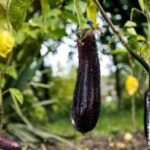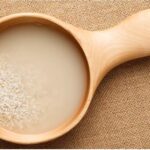Here is some useful information about how to use, choose, and store spring onions, provided by Dr. Nguyen Hoai Thu from the Institute of Applied Medicine of Vietnam.
1. Main components and effects of spring onions
The main component of spring onions is water. They are very low in calories, fat, and cholesterol. Spring onions are a type of vegetable with fewer carbs compared to other vegetables like carrots, potatoes, and corn.

Dr. Nguyen Hoai Thu – Institute of Applied Medicine of Vietnam
The nutritional components in spring onions include vitamin K, vitamin C, and folate (a type of vitamin found in the structure of DNA and especially important for pregnant women).
Provides fiber: Spring onions help provide about 10% of the daily fiber intake, which increases the feeling of fullness, aids digestion, and lowers cholesterol levels.
Prevents colds: Spring onions have antibacterial and antiviral properties, helping to fight viral infections such as colds and remove mucus.
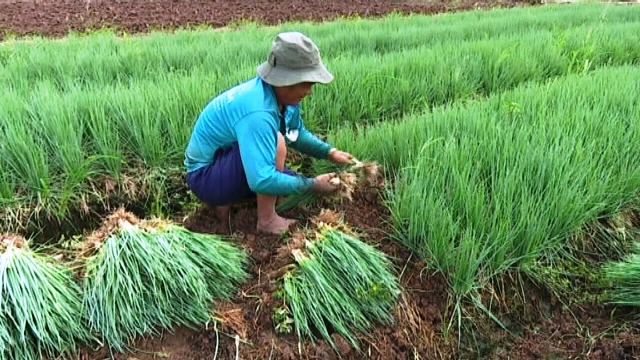
Spring onions grown in a field.
2. Who should limit their consumption of spring onions?
Spring onions are known to be a very good spice for the cardiovascular system, helping to improve blood circulation and prevent blood clots. However, for some medications related to anticoagulant treatment, onions can reduce the effectiveness of the drugs. Therefore, if you are taking anticoagulant medication, consult your doctor about including onions in your meals.
According to several studies, onions are good for cardiovascular health and help stabilize blood pressure. However, people with high blood pressure should not eat a lot of spring onions.
Women during their menstrual period should not eat a lot of spring onions as it will increase their menstrual flow.
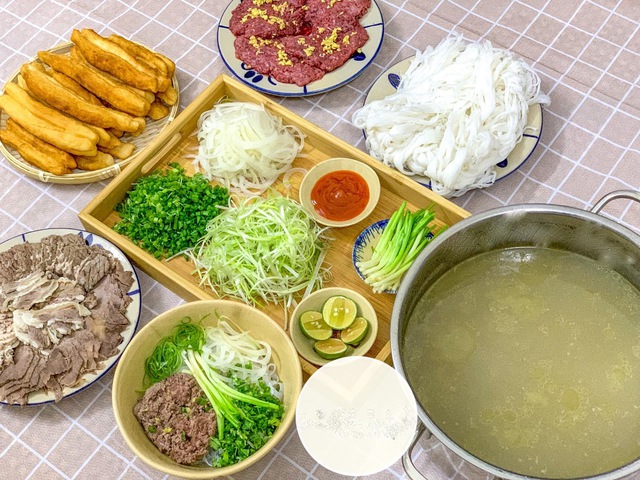
People with body odor, high blood pressure, and women during their menstrual period should limit their consumption of spring onions.
For those who suffer from body odor or excessive sweating, the consumption of spring onions should be limited. Onions contain high levels of S-oxit propanethion and allinase, which produce a slightly pungent odor when their enzymatic structure is broken down. When these substances enter the stomach, they react chemically with digestive secretions to release free sulfur radicals.
The remaining components are converted into a compound called Allyl methyl sulfide – AMS (CH2=CHCH2SCH3). When this compound reaches the large intestine, it quickly absorbs into the bloodstream and circulates throughout the body, and is also excreted through the apocrine sweat glands in the armpits, groin, and feet, causing a slightly pungent sulfur odor.
For people with internal heat, consuming large amounts of spring onions can lead to discomfort and skin breakouts.
3. How to choose fresh spring onions
When buying spring onions, look for those with deep green stems, indicating freshness. Fresh spring onions will have green leaves from the base to the tip, except for the white bulb.
Avoid buying spring onions with yellow or wilted leaves, as these are signs of deterioration and loss of flavor.
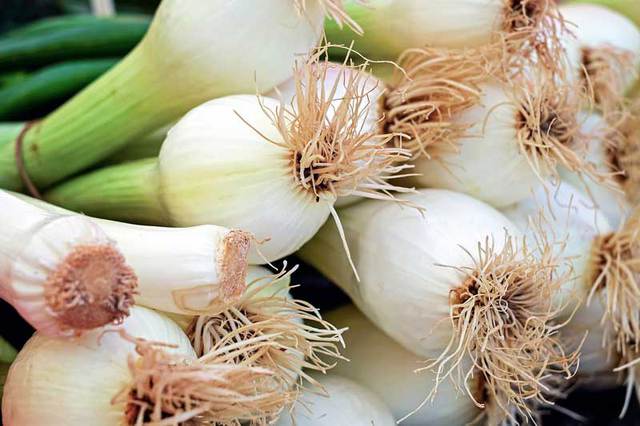
Choose spring onions with intact roots and a full base without scratches.
Opt for spring onions with a full base without scratches, as scratches can lead to a loss of nutrients.
Fresh spring onions will have deep green leaves and white bulbs. However, if the bulb has turned yellow or rotten, do not purchase it as it is likely old and has lost its flavor.
Choose spring onions with intact roots. Typically, when harvesting spring onions, the roots are left intact and then washed before selling. If the roots are white and fresh, it indicates that the onions are freshly harvested; if the roots have turned yellow or rotten, they are old.
5. How to store spring onions
Storing whole spring onions
Method 1: Using paper towels. To keep whole spring onions fresh for longer, prepare a ziplock bag and a few damp paper towels.
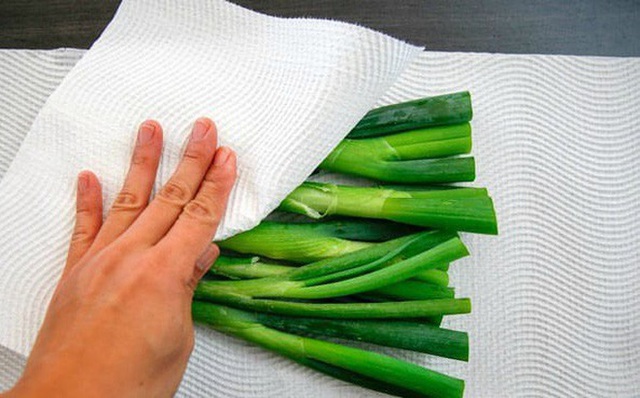
Storing whole spring onions.
Wash the spring onions and cut them to fit the size of the ziplock bag. Wrap the onions by dampening the paper towels and placing the onions on top, then gently roll them up.
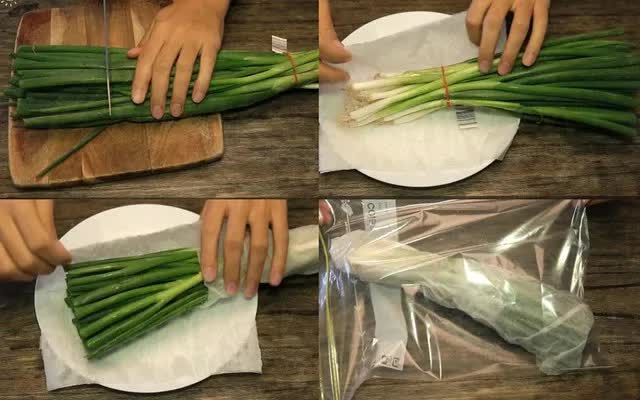
Finally, place them in the ziplock bag and store them in the refrigerator’s crisper drawer. With this method, the spring onions can last up to 8 weeks. Change the damp paper towels every 1-2 weeks.
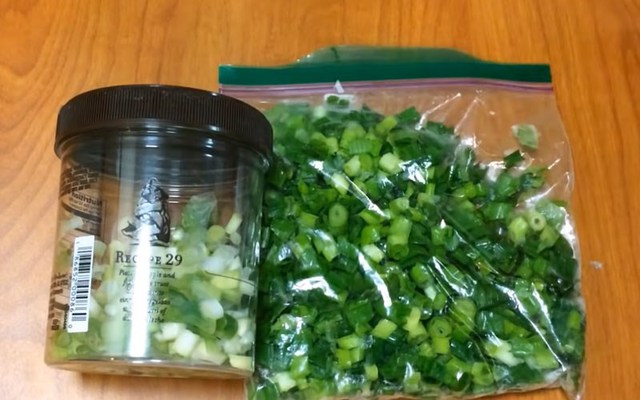
Place the spring onions in a ziplock bag and store them in the refrigerator.
Method 2: Storing in a glass of water. Wash the spring onions thoroughly, including the roots, and prepare a clean glass of water, preferably a transparent one for easy observation.
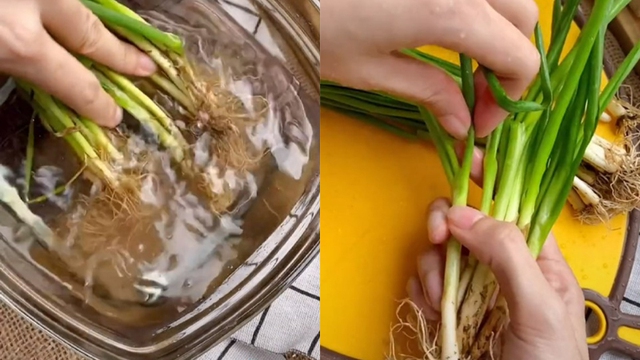
Wash the spring onions thoroughly, including the roots.
Place the spring onion stalks in the glass, cover them with a thin layer of plastic wrap, and store them in a cool, well-ventilated place. With this method, the spring onions can last up to 3 weeks.
Storing chopped or sliced spring onions
Wash the spring onions and let them air dry in a colander. Then, separate the white ends from the green leaves and chop them accordingly. Place the chopped onions in a ziplock bag or a container with a tight-fitting lid and store them in the freezer.
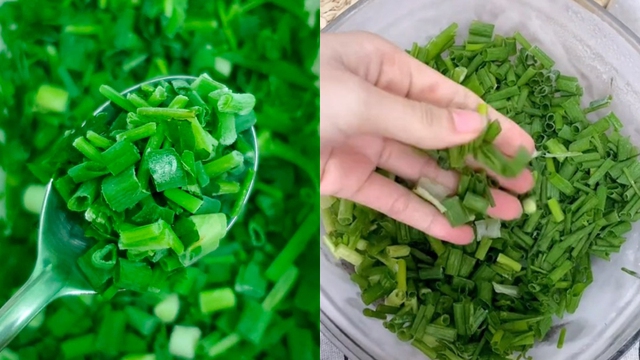
Chop the spring onions and store them in the freezer.
Method 1: Soaking in oil. Wash the spring onions, trim the roots, and cut them into segments about 3-4 finger lengths. Place them in a bowl or deep plate.
Heat about 2 cups of oil over medium heat until hot. Turn off the heat and pour the hot oil over the spring onions, letting them cool completely. Then, transfer the onions and oil to a glass jar or container, seal it tightly, and store it in the refrigerator.
With this method, the spring onions can be stored for more than a week.
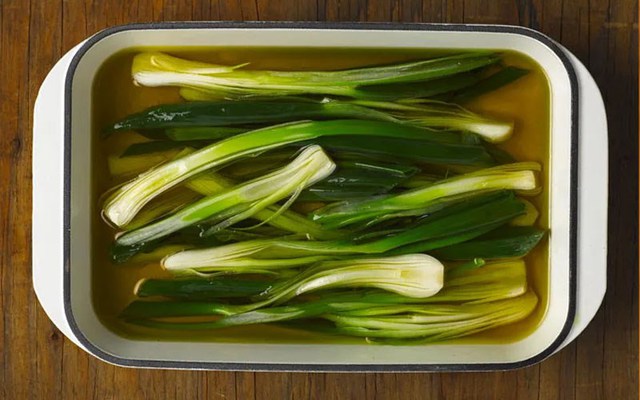
Soak the spring onions in oil.
Method 2: Freezing spring onions
If you frequently use spring onions for frying or cooking, this method is ideal. Cut the spring onions into segments or chop them finely. Place a suitable amount into ice cube trays and pour in some oil.
Place the trays in the freezer until the oil and onions are frozen solid. Then, pop out the “onion cubes” and store them in separate bags or containers in the freezer. When cooking, simply take out an “onion ice cube” and add it to the pan or pot.
With this method, the spring onions can be stored for up to 2 months.
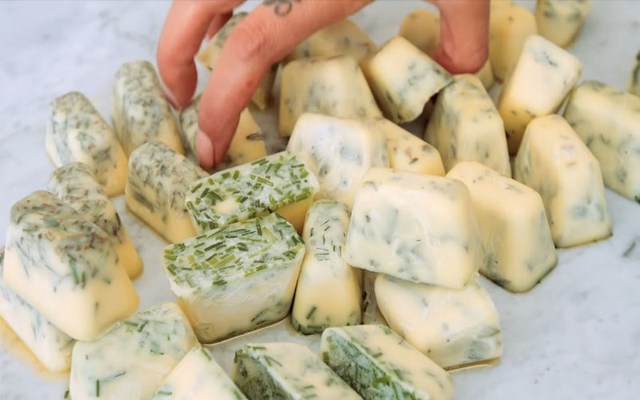
Freeze the spring onions.
According to SKDS
Grow Pak Choi at Home: Your Ultimate Step-by-Step Guide
Are you planning to grow your own Chinese kale (Brassica alboglabra) at home for a fresh and healthy supply of vegetables? Well, look no further! Our step-by-step guide will teach you everything you need to know to become a Chinese kale-growing master. Get ready to roll up your sleeves and dive into the world of horticulture!
























